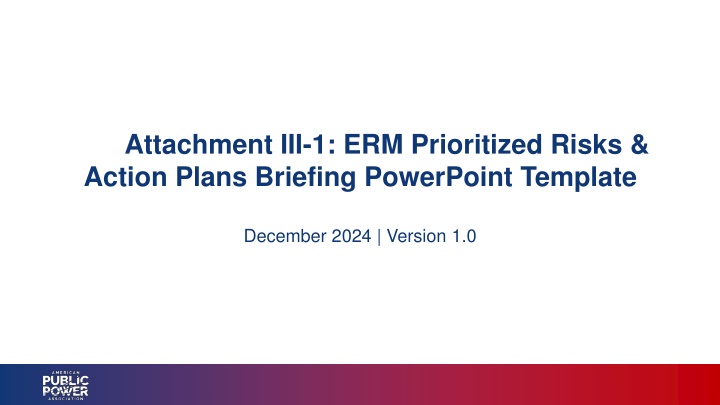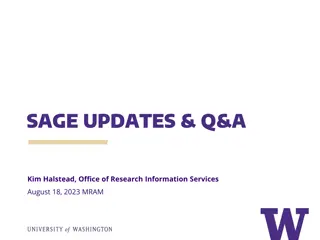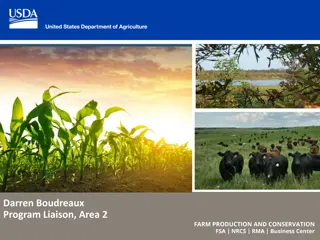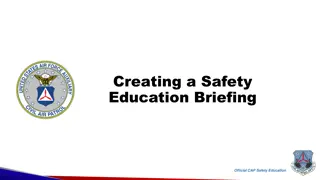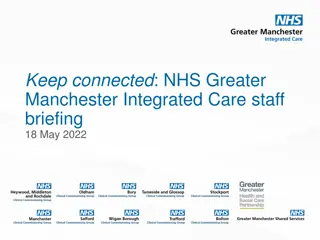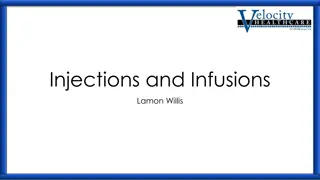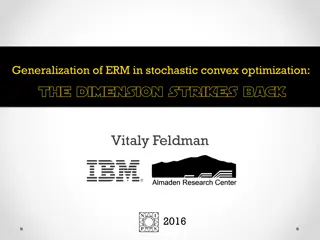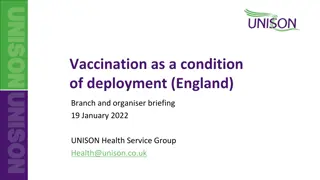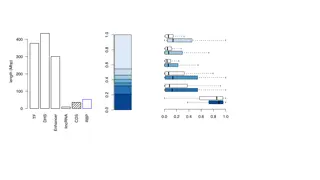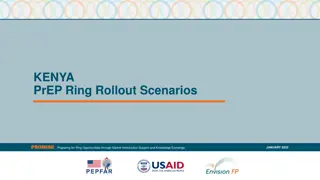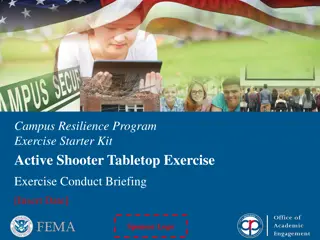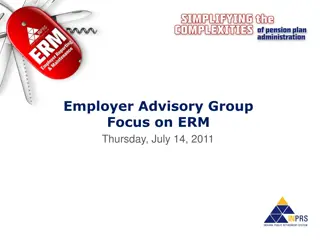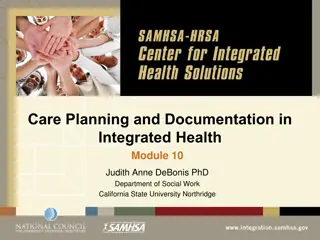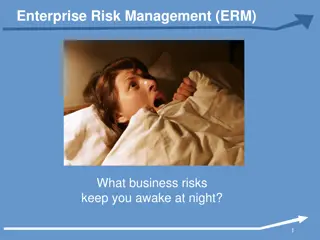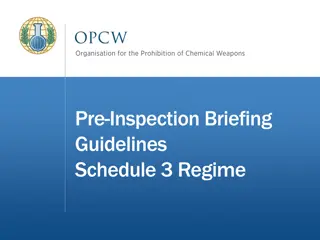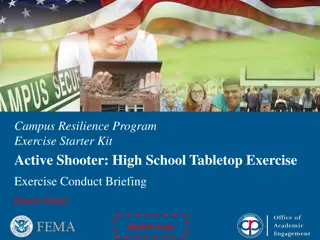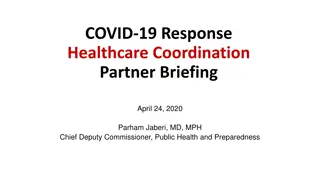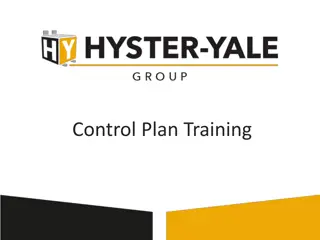ERM Prioritized Risks & Action Plans Briefing
This PowerPoint template covers ERM program accomplishments, risk assessment results, prioritized risks, recommendations, and more. It also outlines the utility's vision, mission statement, ERM governance structure, and risk management approach.
Download Presentation

Please find below an Image/Link to download the presentation.
The content on the website is provided AS IS for your information and personal use only. It may not be sold, licensed, or shared on other websites without obtaining consent from the author.If you encounter any issues during the download, it is possible that the publisher has removed the file from their server.
You are allowed to download the files provided on this website for personal or commercial use, subject to the condition that they are used lawfully. All files are the property of their respective owners.
The content on the website is provided AS IS for your information and personal use only. It may not be sold, licensed, or shared on other websites without obtaining consent from the author.
E N D
Presentation Transcript
Attachment III-1: ERM Prioritized Risks & Action Plans Briefing PowerPoint Template December 2024 | Version 1.0
Agenda Utility s ERM background Risk assessment results Utility s risk tolerance levels and risk limits ERM program accomplishments and activities Review of utility s prioritized risks Recommendations Next steps
Vision & Mission Statement/ERM Policy [Insert utility s vision & mission statement or ERM policy here] 1 #PublicPower www.PublicPower.org
ERM Governance Structure [Insert utility s ERM governance structure here] 1 #PublicPower www.PublicPower.org
ERM Approach Identify and agree on risks and/or opportunities to the achievement of strategic goals and objectives Occurs quarterly Business priorities, vision and mission, performance and objectives Identify Assess risks against standard risk rating criteria to support qualitative risk prioritization for impact, likelihood, and management preparedness Occurs quarterly Monitor risk mitigation effectiveness using leading, not lagging, metrics; leverage defined acceptable risk tolerance and/or KRIs to inform risk escalations Occurs biannually Enterprise Risk Management Process Monitor Assess Communicate Respond Identify risk responses and adjust strategy to achieve or exceed performance objectives balanced to risk appetite Ongoing Provide a holistic risk portfolio report focused on achieving performance objectives and designed to enable management decision-making Ongoing 1 #PublicPower www.PublicPower.org
ERM Approach Explained [Include detailed schedule for the ERM process for the utility here. For example, the ERM committee meets quarterly to identify and assess risks, the ERM committee reports on risk summary biannually to the governing board, etc.] 1 #PublicPower www.PublicPower.org
Risk Assessment Scale Likelihood [Include definition of likelihood and utility s likelihood scale] Level 1 2 3 4 5 Likelihood Criteria Rare: Unlikely to occur, <5% chance Unlikely: Could occur occasionally, 5% - 20% chance Possible: Might occur, 21% - 50% chance Likely: Will probably occur, 51% - 80% chance Almost Certain: Expected to occur, > 80% chance 1 #PublicPower www.PublicPower.org
Risk Assessment Scale Impact [Include definition of likelihood and utility s impact scale] Level 1 2 3 4 5 Impact Criteria Insignificant: No significant impact Minor: Limited impact, easily manageable Moderate: Noticeable impact, manageable Major: Significant impact, requires attention Catastrophic: Severe impact, critical 1 #PublicPower www.PublicPower.org
Utilitys Risk Tolerance Levels and Risk Limits Residual Risk Score Scale Risk Category Risk Details Tolerance Level Risk Limit Minimal operational downtime ensures service reliability and prevents customer dissatisfaction. For public power utilities, keeping downtime below X hours helps maintain consistent service. Immediate action required if downtime exceeds X hours; investigate causes of downtime immediately, implement corrective actions, and communicate with stakeholders regarding service status 1-4: Low risk 5-8: Moderate risk 9-10: High risk Low Operational Downtime (X-X hours) Limits financial exposure to manageable levels, ensuring the utility can absorb potential losses without significant impact on its operations or financial stability. Review and mitigate if financial loss exceeds $XXX; conduct a financial review, identify contributing factors, and adjust financial strategies or budget allocations as necessary 1-4: Low risk 5-7: Moderate risk 8-10: High risk Financial Loss Moderate ($X - $XXX) Maintaining a low threshold for safety incidents helps ensure a safe working environment and compliance with safety regulations. This limit helps to minimize risks to personnel and prevent potential hazards. Immediate review and action required if incidents exceed X per year; perform an incident investigation, update safety protocols, and provide additional training or resources to staff 1-4: Low risk 5-7: Moderate risk 8-10: High risk Low (X - X incidents per year) Safety Incidents Restricting customer outages to X incidents per year helps maintain high service levels and customer satisfaction. This level is low enough to prevent widespread dissatisfaction while allowing for minor issues. Immediate corrective action required if outages exceed X per year; assess the cause of outages, enhance response strategies, and inform customers about ongoing efforts to improve service reliability 1-4: Low risk 5-7: Moderate risk 8-10: High risk Low (X - X incidents per year) Customer Outages Immediate review and improvement if breaches exceed X incidents; conduct a thorough security audit, enhance cybersecurity measures, and implement staff training on security protocols. 1-4: Low risk 5-7: Moderate risk 8-10: High risk Ensures measures are in place to reduce the likelihood of a breach. Cybersecurity Breaches Moderate (X - X incidents) 1 #PublicPower www.PublicPower.org
ERM Program Accomplishments & Activities [Include recent accomplishments of the ERM program such as conduction of workshops, interviews, update to risk register, identification of new risks, etc.] 1 #PublicPower www.PublicPower.org
Risk Assessment Results Summary [Include overview of risks identified and prioritized based on assessment, critical risks that need to be addressed due to significant impacts, etc.] 1 #PublicPower www.PublicPower.org
Risk Assessment Results Risk Register 1 #PublicPower www.PublicPower.org
Risk Assessment Results Heat Map Likelihood 1 5 (Very Unlikely) 2 (Unlikely) 3 (Possible) 4 (Likely) (Almost Certain) R002 5 (Catastrophic) R001 Impact 4 (Major) 3 (Moderate) R003 2 (Minor) 1 (Negligible) 1 #PublicPower www.PublicPower.org
Understanding Cost-Benefit Analysis in Risk Mitigation Purpose of cost-benefit analysis, or CBA, in risk mitigation is to evaluate the financial and strategic implications of mitigation options to prioritize the most effective actions Identify Costs Identify Benefits Decision Compare 1 #PublicPower www.PublicPower.org
Applying CBA to Identified Risks Risk ID Category Risk Mitigation Options Risk Description Cost Benefit Net Benefit Regular maintenance schedule Avoid $2M/year in repair and downtime costs Critical equipment malfunction leading to operational disruptions $500K/year +$1.5M/year R001 Operational Avoid $10M in repair costs over 5 years Replace aging equipment $5M (one- time) +$5M over 5 years Long-term power purchase agreements Stabilize costs, saving $2M/year in volatility $1M/year +$1M/year Increased energy procurement costs R004 Financial Invest in renewable generation Long-term savings of $20M over 10 years $10M (one- time) +$10M over 10 years 1 #PublicPower www.PublicPower.org
Recommended Actions [Insert high-level summary of recommended actions here to address most significant risks] 1 #PublicPower www.PublicPower.org
Mitigation Actions Details [Insert detail of the mitigation actions recommended addressing the most significant risks; include information on cost (if applicable), risk owners, timeline, next steps, etc.] 1 #PublicPower www.PublicPower.org
Appendix: Types of Risk Treatments Avoidance is discontinuing activities that generate high risks. Mitigation is implementing measures to reduce the risk s likelihood or impact. Transfer is sharing the risk through insurance, contracts, or partnerships. Acceptance is choosing to retain the risk and prepare for its consequences. 1 #PublicPower www.PublicPower.org
Appendix: Detail of Prioritized Risks [Include information on the risk owners, specific departments monitoring the risks, etc.] [It is helpful to include alignment of prioritized risks compared to similar-sized utility in the state/jurisdiction or in alignment with DOE state risk profile] 1 #PublicPower www.PublicPower.org
